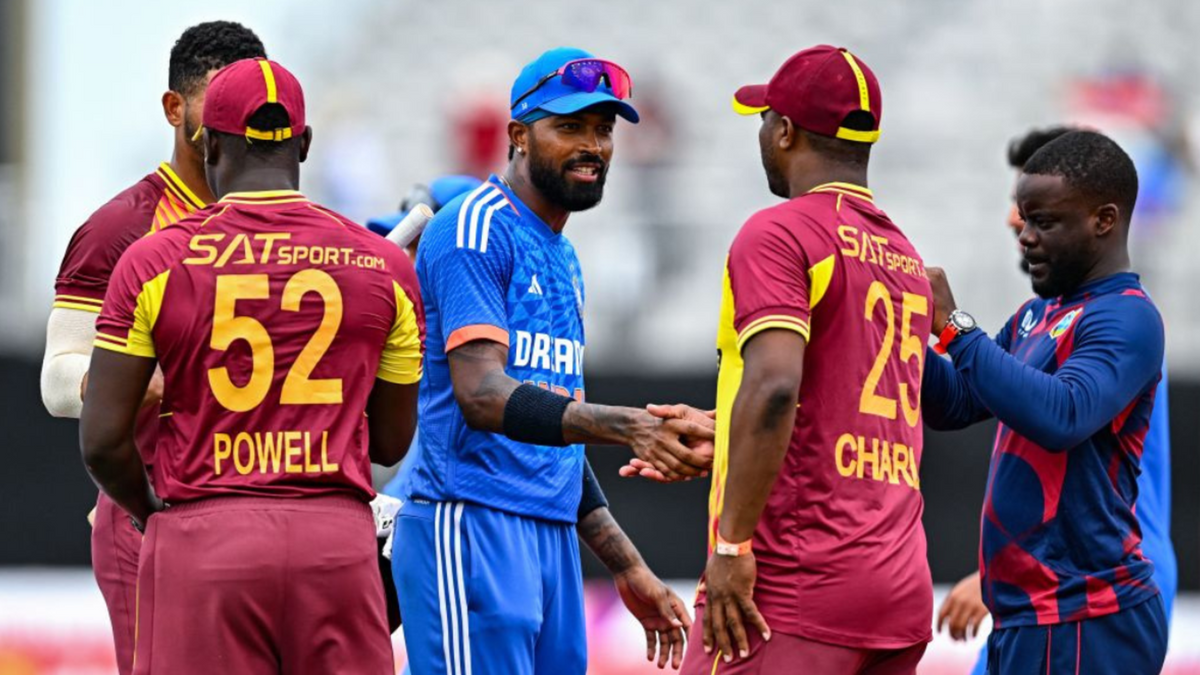
India’s streak of 12 successive T20I series victories came to an end when the West Indies beat them in the fifth T20I of the five-match series, in Lauderhill on Sunday (August 13). Here are five takeaways from India’s rare T20I series loss.
Subscribe to the Wisden Cricket YouTube channel for post-match analysis, player interviews, and much more.
The West Indies won multiple games to secure a bilateral series victory over India for the first time in any format since 2006. Having won the first two T20Is, they looked well on their way to achieving a historic landmark early into the series, but India came roaring back to win twice on the trot and take it to the decider.
Brandon King, Romario Shepherd, and Nicholas Pooran then guided the West Indies to an eight-wicket victory in the final game to clinch the series 3-2. After the match, India captain Hardik Pandya said that the defeat will teach them a lot. Here are the top five learnings India can take away from the defeat.
The need for more all-rounders
India played with a combination of five batters, two all-rounders, and four specialist bowlers. The word ‘specialist’ is to be taken literally here, for their No.8 batters in the series were Kuldeep Yadav, Arshdeep Singh, and Ravi Bishnoi. Their respective highest scores in their T20 (not T20I) careers are 23, 12, and 22.
[breakout id=”0″][/breakout]
India won two and lost three matches with this combination. The long tail meant that the top- and middle-order batters often had to play more conservatively than they could, which in turn led to sub-par totals.
In Tilak Varma and Yashasvi Jaiswal, they now have a couple of part-time bowlers among their batters, but they desperately need to invest in more bowlers who can wield the willow in an era where T20 teams often have batting down to ten and eleven.
Alternately, they can back the batters to chip in and go in with a bowler less.
India may need to turn to other wicketkeeping options
Ishan Kishan and Sanju Samson, the two Indian wicketkeepers in this T20I series, had poor outings. Kishan scored 33 from two innings at a strike rate of 103, while Samson’s 32 from three innings at a strike rate of 114. Both have had underwhelming T20I careers so far. Kishan averages 24.50 and strikes at 122 after 29 games, while Samson’s numbers read 18.50 and 132 after 22 games.
Kishan is not part of the squad for the Ireland tour, but Samson is. This time, however, Jitesh Sharma will keep him on his toes. Having impressed in the last two IPL seasons with his ability to hit without getting set, Jitesh may get the nod ahead of – or even alongside – Samson. If he grabs the opportunity, he can leapfrog both Samson and Kishan in the pecking order of the T20I wicketkeeper.
Tilak Varma and Yashasvi Jaiswal are here to stay
Both left-handers impressed in their maiden T20I series. Tilak ended as the highest run-getter for India, with 173 runs at an average of 57.66 and a strike rate of 141, whileJaiswal’s three games included a dazzling 84 not out.
[breakout id=”1″][/breakout]
Both batters – Jaiswal at the top, Tilak in the middle order – demonstrated that they do not need to get their eyes in before going for the bowling. Their ability to manoeuvre both pace and spin make both men ideal long-run T20I candidates. Their ability to bowl part-time spin only adds to their CVs.
The return of Kuldeep Yadav – the T20I bowler
With six scalps, Kuldeep was India’s second-highest wicket-taker in the series. His wickets came at 15.3 apiece, and he went for less than six runs an over. No other bowler who picked a wicket could keep it at less than a run a ball.
[breakout id=”2″][/breakout]
Kuldeep consistently tormented Pooran, the highest run-scorer of the series, and was near-impossible to get away. Having already made a roaring comeback in ODIs, he now returned to his best in T20Is. In the process, he became the fastest Indian to 50 T20I wickets.
Hardik Pandya needs a clear role
Pandya batted twice at No.5 and twice at No.6 in a unit where the tail begins at No.8. He came in situations that demanded completely different approaches with the bat. With the ball as well, he shuffled himself around, sometimes taking the new ball and finishing his quota early, while sometimes starting as late as the 12th over.
As captain, Pandya probably wants to take more responsibility with both bat and ball, and wants to be the most flexible cricketer of the side. However, a slightly clearer and well-defined role should do both him and the team a lot of good.







